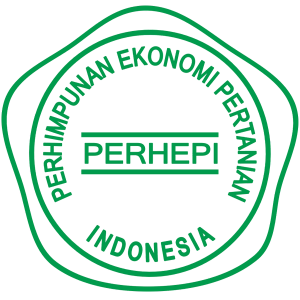Chinese Cabbage Plant (Brassica Rapa) Test Of The K01 Variety On The Total Concentration Of AB Fertilizer
DOI:
https://doi.org/10.55173/agriscience.v8i2.154Keywords:
Cabbage, Hydroponics, Fertilizer, Variety, LAI, PlantAbstract
This study aims to evaluate the response of K01 variety of Chinese cabbage (Brassica rapa) to different concentrations of AB fertilizer in a hydroponic system. The experiment was conducted for six weeks at the Horticulture Research Center, MARDI Serdang, Malaysia, using a Completely Randomized Design (CRD) with five AB fertilizer concentration treatments (T1 to T5), five replications, and six samples per replication. The tested AB fertilizer concentrations ranged from 0.8 to 2.0 EC. Parameters observed included leaf number, plant height, chlorophyll content, and leaf area index (LAI). The results showed that treatments with higher AB fertilizer concentrations (T2 and T3) produced the best results in leaf number, reaching 33.4 leaves by the sixth week. In contrast, treatments with lower AB fertilizer concentrations (T1 and T4) resulted in lower leaf numbers. This study concluded that optimal AB fertilizer concentrations can enhance leaf number and growth of K01 variety Chinese cabbage in a hydroponic system. Therefore, proper fertilizer concentration management is crucial in hydroponic cultivation of Chinese cabbage to achieve maximum growth.
References
Batrisyia, B., & Haryanto, I. (2023). Analisis Regulasi Pada Tanaman Transgenik dalam Perlindungan Varietas Tanaman Bagi Pemulia Tanaman. Jurnal USM Law Review, 6(3), 931-942.
Efendi, E., Deddy, W. P & Sumain. (2017). Respon Pertumbuhan dan Produksi Tanaman Pakcoy (Brassica rapa L) terhadap Pemberian Mulsa Serbuk Gergaji dan Pupuk NPK. Jurnal Agroteknologi Universitas Asahan. 13(3):30-38.
Izzany, N. A., Radinka, S., Ramadhan, N. Z. T., Nauli, G., Vergina, C. M., & Ketaren, D. Y. B. (2023). Peran mahasiswa dalam menjaga dan membudidayakan tanaman hidroponik di Jurusan PKK. Indonesian Journal of Conservation, 12(1), 24-32.
Masduki, A. (2017). Hidroponik sebagai sarana pemanfaatan lahan sempit di Dusun Randubelang, Bangunharjo, Sewon, Bantul. Jurnal Pemberdayaan: Publikasi Hasil Pengabdian Kepada Masyarakat, 1(2), 185-192.
Muhammad. A.A, & Bambang.G., (2023). Pengaruh Varietas dan Konsentrasi Nutrisi Terhadap Pertumbuhan dan Hasil Selada Merah (Lactuca Sativa L.) Menggunakan Hidroponik Sistem Sumbu. Jurnal Produksi Tanaman, 1(3), 2588-2594.
Mulyani, S. 2006. Buku Anatomi Tumbuhan. Yogyakarta: Kanisius
Naisila, Sonia P. N. K., Vina O. C., & Ika. P. V. (2024). TUMBUHAN. Bioedutech: Jurnal Biologi, Pendidikan Biologi, Dan Teknologi Kesehatan, 2(2), 193–203. https://doi.org/10.572349/biedutech.v2i2.1687
Pasaribu, P. O., Indrayanti, R., Asharo, R. K., Priambodo, R., Rizkawati, V., & Irnidayanti, Y. (2020). Pelatihan Budidaya Pakcoy Dengan Sistem Hidroponik Rakit Apung Sebagai Upaya Memanfaatkan Pekarangan Sempit Di Rawamangun, Jakarta Timur. In Prosiding Seminar Nasional Pengabdian Kepada Masyarakat (Vol. 1, pp. SNPPM2020ST-108).
Purba, T., Ningsih, H., Purwaningsih, Junaedi, A, S., Gumawan, B., Junairah., Firgiyanto, R & Arsi. (2021). Tanah dan Nutrisi Tanaman. Yayasan kita Menulis. Medan
Rizal, S. (2020). Manfaat Alam Dan Tumbuhan “Sumber Belajar Anak” Dalam Perspektif Islam. Childhood Education: Jurnal Pendidikan Anak Usia Dini, 1(2), 96-107.
Rizal, S. (2017). Pengaruh Nutrisi yang diberikan terhadap Pertumbuhan Tanaman Sawi Pakcoy (Brassica rapa L) yang di Tanam secara Hidroponik. Jurnal Sainmatika. 14(1): 38-44
Susila A. D. (2013). Sistem Hidroponik. Modul Matakuliah Dasar Dasar Hortikultura Fakultas Pertanian. Bogor (ID): Institut Pertanian Bogor.
Downloads
Published
Issue
Section
License
Copyright (c) 2025 Alfi Syahrin, Alridiwirsah, Farah Zaidat

This work is licensed under a Creative Commons Attribution-ShareAlike 4.0 International License.














